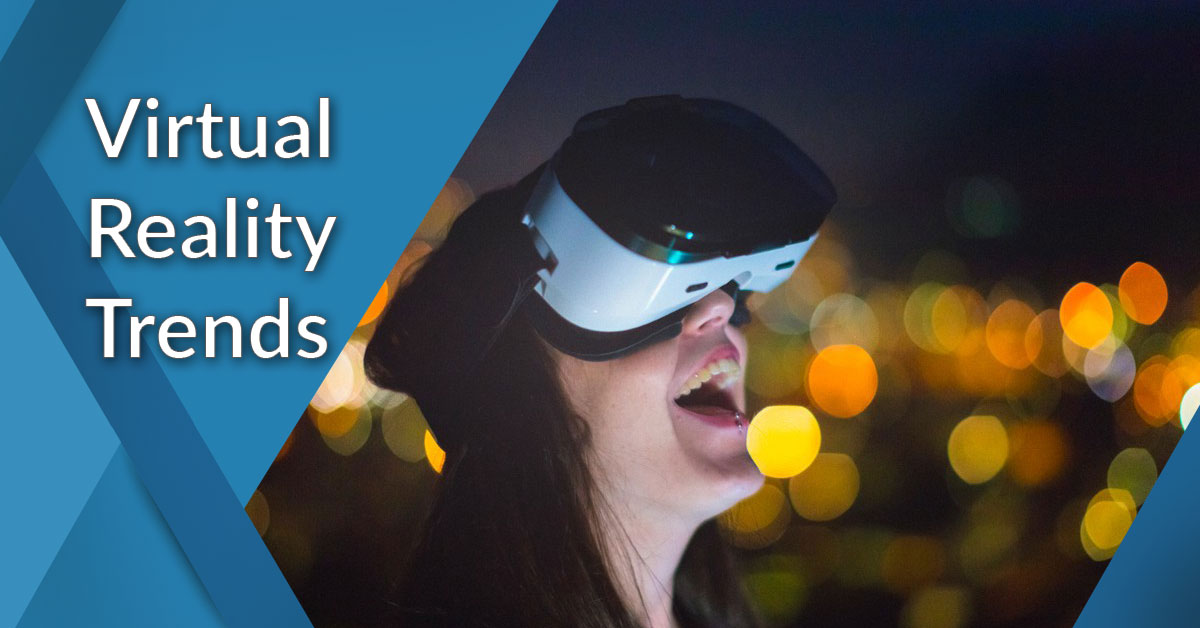Exploring the Top 5 Virtual Reality Trends Shaping 2024
Virtual reality (VR) continues to evolve at a rapid pace, pushing boundaries and transforming various industries. As we step into 2024, the VR landscape is witnessing significant advancements and exciting developments. From immersive experiences to revolutionary technology, let's explore the top five virtual reality trends shaping the year.
Metaverse Expansion:
- The concept of the metaverse, a shared virtual space where users can interact with a computer-generated environment and other users, is gaining momentum. Initially popularized by science fiction, the metaverse is now becoming a reality with companies like Meta (formerly Facebook) leading the charge.
- Companies are investing heavily in creating expansive metaverse platforms, blurring the lines between virtual and physical realities. These platforms aim to provide users with a persistent, interconnected virtual universe where they can socialize, work, play, and explore.
- Metaverse experiences are becoming more social and interconnected, offering users unprecedented levels of engagement and interaction. From virtual concerts and conferences to collaborative workspaces and immersive gaming environments, the metaverse is redefining how we connect and interact in digital spaces.
Augmented Reality Integration:
- Augmented reality (AR) is increasingly being integrated into VR experiences, creating a mixed reality environment that combines the best of both worlds. While VR immerses users in entirely virtual environments, AR overlays digital content onto the real world, enhancing our perception of reality.
- VR headsets with built-in AR capabilities are hitting the market, enabling users to overlay digital content onto the real world seamlessly. This integration opens up new possibilities for immersive gaming, interactive education, and practical applications in fields such as architecture and design.
- The combination of VR and AR technologies is blurring the boundaries between physical and digital realities, offering users a rich and dynamic spectrum of experiences that cater to diverse interests and preferences.
Haptic Feedback Innovation:
- Haptic feedback technology is undergoing significant advancements, enhancing the sense of touch and immersion in VR environments. Traditionally, VR experiences have primarily focused on visual and auditory stimuli, but haptic feedback adds a tactile dimension, making interactions feel more realistic and engaging.
- Wearable haptic devices are becoming more sophisticated, providing users with realistic tactile sensations that simulate physical interactions. These devices may include gloves, vests, or full-body suits equipped with actuators, sensors, and vibration motors to deliver precise feedback.
- From subtle vibrations to full-body feedback, haptic technology is revolutionizing the way users perceive and interact with virtual worlds, adding a new dimension to the VR experience. Whether it's feeling the recoil of a virtual gun, the texture of virtual objects, or the sensation of virtual environments, haptic feedback creates a more immersive and memorable experience for users.
AI-Powered Virtual Assistants:
- AI-powered virtual assistants are becoming integral components of VR systems, offering users personalized experiences and assistance. These virtual assistants leverage artificial intelligence (AI) algorithms to understand user commands, preferences, and behaviors, providing tailored recommendations and support.
- Virtual assistants can assist users in navigating virtual environments, offering real-time guidance and suggestions based on context and user interactions. Whether it's providing directions in a virtual city, recommending activities in a virtual world, or assisting with complex tasks, AI-powered virtual assistants enhance the usability and accessibility of VR technology.
- As AI continues to advance, virtual assistants are becoming more conversational, intuitive, and responsive, creating more immersive and interactive experiences for users. From Siri and Alexa-inspired assistants to custom avatars with unique personalities, virtual assistants are evolving to become indispensable companions in the virtual realm.
Health and Wellness Applications:
- VR is increasingly being utilized in the realm of health and wellness, offering innovative solutions for therapy, rehabilitation, and stress relief. The immersive nature of VR allows users to escape reality and immerse themselves in virtual environments that promote relaxation, mindfulness, and emotional well-being.
- Virtual reality experiences are being developed specifically to address mental health issues such as anxiety, PTSD, and phobias, providing immersive environments for exposure therapy and relaxation techniques. By simulating controlled environments and triggering stimuli, VR therapy can help individuals confront and overcome their fears in a safe and supportive setting.
- VR-based physical therapy programs are gaining traction, leveraging interactive simulations to aid in rehabilitation and recovery processes. Whether it's regaining mobility after an injury, improving motor skills after a stroke, or managing chronic pain, VR therapy offers personalized exercises and feedback to accelerate the healing process and improve patient outcomes.
In conclusion, 2024 promises to be a transformative year for virtual reality, with these five trends driving innovation and shaping the future of VR technology. From the expansion of the metaverse to the integration of augmented reality and the advancement of haptic feedback technology, the possibilities for immersive experiences are endless. With AI-powered virtual assistants enhancing usability and health and wellness applications leveraging VR for therapeutic purposes, the potential impact of virtual reality on society is truly remarkable. As we continue to push the boundaries of what's possible in the virtual realm, one thing is certain – the future of VR is incredibly exciting.


